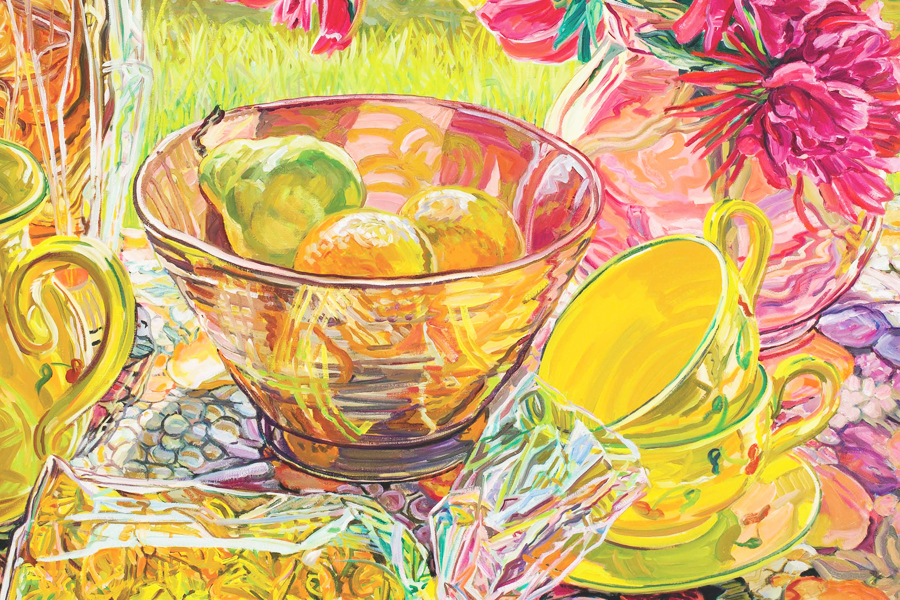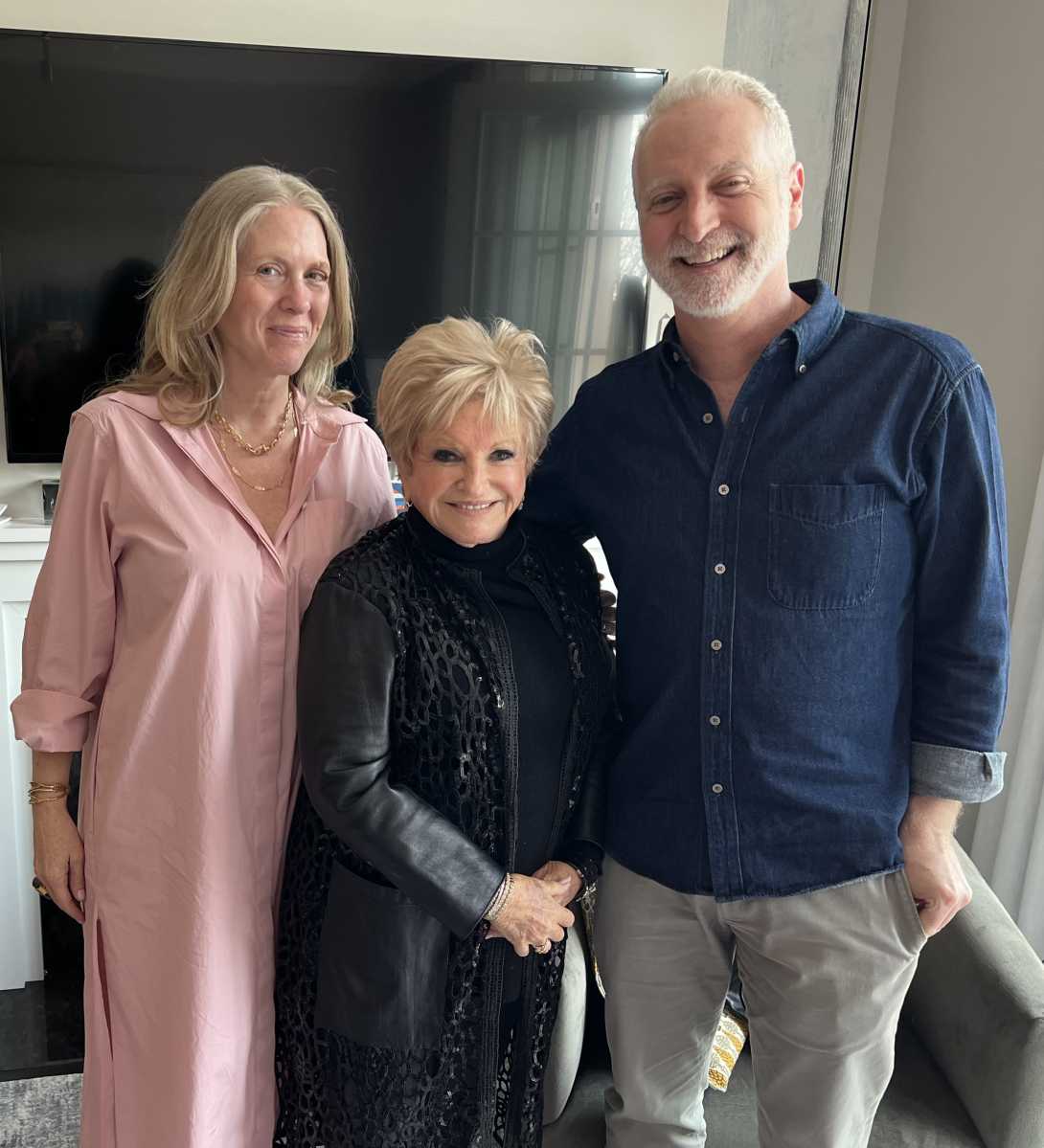Honoring This Week’s Dan's Papers Cover Artist: Janet Fish

Consider the following objects: yellow plates, red flowers, green pear. Sounds luscious and visually attractive, doesn’t it? Yet when positioned in a Janet Fish still life, the same items become something more.
This observation is obvious when we look at this week’s cover of Fish’s work, called “Provence.” The composition and light evoke descriptions like “lush,” “spontaneous” and “spritely.” No doubt about it, there’s nothing “still” about Fish’s still life.
However, the idea of “life” is very much present. The painting’s translucent quality provides a window into the content of the containers. It’s as if the bowl, for example, is a symbol for the body; the fruit itself may represent the soul. And although the glass objects may be fragile, their contents are substantive.
Not all of Fish’s still lifes are structured similarly. Some have no translucent elements, like her painting with a bag of oranges and a bowl of chips. But we can’t help notice that the net covering the oranges allows us to see the fruit clearly. Another work, a box of peaches half- covered with plastic wrap, also shows us the peaches inside. The “soul” is always visible in Fish’s world.
Do you have a meaning or theme in mind when you paint?
I don’t have a meaning in mind; I don’t plan what I’ll paint in advance. I don’t deal with subject matter. Different objects have their own meaning. It’s the context and relationship between the objects that count.
Since you don’t have a theme in mind, you’re saying the meaning is organic. But do you ever add and subtract things in the process?
I may start out with some objects, and I may realize I have the wrong thing in the right-hand corner, so I change it.
How would you summarize your process?
I am flexible. What I set up to do in the beginning is not what it is in the end.
Your cover image was inspired by your trip to Provence about 10 years ago, but when you were there you didn’t think about what you might paint.
I gave up seeing every painting in a museum when my husband and I travel. I’m just relaxing. I’m on vacation. I don’t do art.
On that vacation to Provence, what did you experience?
We went to the Niaux Caves, where there were drawings of animals and footprints made by children. Another particular memory was watching this ritual where gypsies put a statue of the Black Mary into the Mediterranean. It was probably left over from primitive times.
When you’re not traveling, you are in Vermont, where you live part of the year, and New York, where you also live. Does Vermont play a part in your art?
When you’re in a place, you do what’s entertaining, so we go for drives, stopping off at antique shops, lawn sales and auctions to find things.
Where do you get other objects?
From friends. I also have some things from my family, old family photographs, although I probably have them for the frames.
Was your family involved in the arts?
Yes. My grandfather was a painter; my mother was a sculptor.
I imagine they encouraged you?
They wanted me to get married to a rich man.
As an artist, you worked on your own with no real encouragement? What did you learn?
Being an artist is a lot of hard work.
Is it as hard now, after you’ve been painting for a long time?
It’s still hard, but it’s my life. That’s what I do.
Janet Fish is represented by New York’s DC Moore Gallery (535 West 22nd. Street). dcmooregallery.com, 212-247-2111




